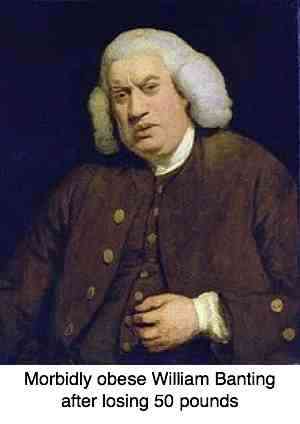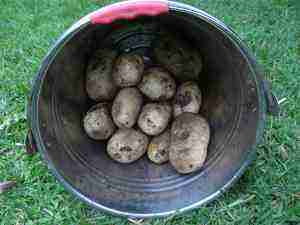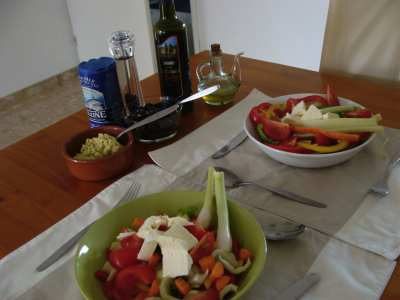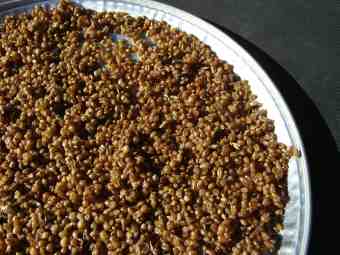- All You Need to Know
Banting Diet
The Banting diet really does work but there are questions, not so much about its effectiveness but the safety of meal plans very high in fats from animal sources.
This is a non-critical description of the low carbohydrate combined with high saturated fat diet; on another page we'll comment on it.
It's been around for a while; in fact for over one hundred and fifty years. In 1862 William Banting was a "morbidly obese" undertaker in London. That means his body mass index was probably over 35. When he started going deaf, he decided to consult one of the most famous doctors of his day; Dr Harvey decided that fat was pressing on his ear drums and making him hard of hearing.

He put the suffering man on an unusual diet that will conflict utterly with everything you know and have read about weight loss; carbohydrate was strictly limited and he was allowed unlimited saturated fat. History has it that when WB again consulted Dr Harvey some six months later, the latter never even recognised Banting; he had lost an incredible number of pounds.
This meal plan has one enormous plus; fans claim that they aren't hungry on the high fat diet.
Diets that do not take hunger into account are doomed to fail; good food plans provide satiety.
Professor Tim Noakes, sports guru at the University of Cape Town did a professional about turn in his teaching; realising the traditional high carbohydrate plan wasn't working for him or his athletes, he started to investigate the merits of the so-called Banting diet proposed by no other than the very famous Dr William Harvey.
So successfully was it followed by William Banting that the famous doctor never recognised his patient; a high saturated-fat meal plan but very low in starch.
Banting Diet
Certainly Noakes has stirred the pot and has many critics but equally thousands of fans who have lost significant amounts of weight; the keto diets face squarely the all-important question of hunger.
Certainly one cannot quibble about the fact that America has become morbidly obese since biochemist Ancel Keys published in 1977 his thesis that cholesterol was the villain of the piece; that saturated fat was the cause of the heart disease epidemic.
He recommended the exact opposite of the Banting diet; very little animal fat and plenty of carbs.
At the time whole carbs were becoming increasingly difficult to find; in effect, Keys turned America to large amounts of refined carbs.
The dramatic turn in the ensuing years from the traditional American diet to a high starch and very low animal fat way of eating resulted in a nation of hungry people who couldn't stop snacking.
Tim Noakes has an impressive pedigree; he's no fly by night crank. After careful study of the research, he has come up with some very interesting facts.
- It's carbohydrate and not saturated fat that raises blood cholesterol.
- Strictly limiting all carbohydrate has a significant effect on lowering the blood glucose of diabetics.
- High fat diets don't raise the risk of cardiovascular disease; rather the opposite.
- It's glycosated meaning sugar-rich haemoglobin that really damages the inner lining of blood vessels and not cholesterol; as measured by a raised HbA1c.
The Banting diet cuts right across everything you've been taught about losing weight. Unlimited animal fat is encouraged; polyunsaturate oils and margarine are banned. And you are encouraged to eat virtually no carbohydrate at all; less than 20g per day.
There is no suggestion of turning to tofu nutrition, for example.
That means no bread or flour products; sugar, bagels and chocolate cake are all out.
The avoidance of all grains because of the carb unfortunately also means no smart bran either; that would lead to more cancer. Rice, potatoes and most fruit except berries are all eliminated from the Banting diet; and pasta too.

Interestingly new potatoes don't affect blood glucose like those from cold storage do; can you scrape the peel off with your nail?
So, butter is back, and you can enjoy the crackling on your pork chops. Steak is definitely on the menu, but not if it was corn fed. Starch makes all animals obese, including our cattle. More important it causes soaring blood glucose, especially in those who are insulin resistant, and that's what damages the tissues.
Proponents have pointed to huge weight losses, a drop in blood pressure and glucose readings; even lower total cholesterol.
Here's an important bit of research; the high carbohydrate coupled with very low fat diet has been strongly implicated in motor neuron disease; it may be a factor in MS too. This was done in studies done in Japan and confirmed by another in the Netherlands.
What does Banting mean?
The word is used both as a adjective, as in Banting diet, but also as a verb. It means to go on a diet that very strictly limits your carbohydrate but you can enjoy unlimited animal fat; olive oil and avocados, everyone agrees having "healthy" fat, are recommended too.
Many have been able to reduce their medication dramatically.
Professor Noakes, a highly qualified physician himself, takes several swipes at the pharmaceutical industry. Statins to lower cholesterol are very profitable drugs, with reportedly one quarter of Americans on them; organised medicine has resisted any challenge of Keys' unproven theory that saturated fat is the cause of the heart attack epidemic.
He also takes on the agricultural lobby that undergirds the 1977 dietary goals for Americans; he believes this is the real villain of the piece. Move bread, cereals, rice and pasta from the base of the food pyramid with 6 to 11 servings to the very top; use them very sparingly.
Steak, butter and bacon are all back in favour. Enjoy eating again, and you won't feel hungry; provided you stay strictly away from the starches. Remember, that means no bread, rice, chips or sugar.
Professor Noakes warns against the extreme danger of enjoying all the fat and steak parts of the Banting diet whilst continuing with the high carbohydrate diet; that's a recipe for disaster. In fact that's exactly the diet that had brought America to lower than fortieth place in the world health stakes. So, no bread with your burger.
There is also a strong move in the Banting diet away from polyunsaturate oils; sunflower, safflower and canola oils are out. Since margarines are made from hydrogenating these oils, it's also banished to Coventry.
There seems no doubt that hydrogenated and oxidised oils are one of the major causes of damage to the intima; the inner lining of the arteries. Next time you purchase a packet of french fries, first ask how long it is since the oil was changed. Those, and raised blood sugar, are the underlying causes of atherosclerosis. Add hypertension to the recipe and strokes and heart attacks are just around the corner.
From the joint pain and chiropractic standpoint too, a diet high in polyunsaturated fats is what raises the omega 6 to 3 ratio with its devastating inflammatory consequences.
Paleolithic diet
The low starch and high fat diets make much of the research indicating that early man survived through hunting and gathering, and was very high in meat and fat and low in starches.
The Paleolithic area was the roughly 2 million years up until 10,000 years ago when agriculture and milled grains were supposed to have begun. Man has a very long small intestine designed for maximising absorption of sugars from a very low starch diet.
Changes to a high starch diet, and particularly a refined starch diet, heralded the dawn of raised blood glucose, obesity and diabetes.
Diabetes
Diabetes and banting is perhaps less controversial. Professor Noakes himself is diabetic and hence his particular interest. Immediately you start banting, you have to halve your insulin; that alone is impressive.
Noakes attributes his diabetes to two factors:
- A family history of diabetes.
- A (he now believes mistaken) commitment to the conventional medical advice for diabetics; eat a high carb diet.
Without a doubt this Banting diet profoundly helps the diabetic gain better blood sugar control; and that automatically means weight loss for the type 2.
Osteoporosis
Your chiropractor will be pleased too; he's less likely to crack a rib, an albeit rare complication of the treatment of rib subluxations. Diabetes osteoporosis is a serious concern with the explosion of new diabetics.
Better blood sugar control will contribute to the prevention of osteoporosis, but the banting diet changes many other things too; no legumes, no fruit except berries and limited low glycemic index starches like butternut.
More research needs to be done before anyone can claim that there is a positive relationship between osteoporosis and banting.
Butter is back
It's interesting that the Banting diet has recently come to prominence at the same moment in dietary history when researchers have come with the startling finding that there is absolutely no scientific basis for going off saturated fats and changing to polyunsaturates.
Does that still mean we can get off statins naturally?
"Butter is back" is the slogan. Find more information by using the Site Search button.
What foods have trans fats is a central question in the philosophy of the Banting Diet.

Helens 15 euro salad is in vogue. There are plenty of greens, high-fat feta cheese and olives; only the hummus is questioned because of its starch content. Legumes are not on Noake's list of allowed foods; I question that in my Banting diet rebuttal, and several other features of his version of the William Harvey diet.
The "low GI bread" too which features high on Helen's menu is disallowed. Not even the Queen is allowed her daily slice and honey, even with butter if she is doing the traditional bant.
Let your food be your medicine was the advice of Hippocrates more than two millennia ago; it's still the best recommendation.
Banting diet modified
Owing to my concerns about keto as advocated by Tim Noakes, yet believing that he's onto something vital, we have come with our Banting diet modified menu plan. In short, include legumes and all low GI carbs, and emphasising rather the healthy fat in the olive and avocado; nuts and seeds too.
In fact, I've discovered this is not new. There are five ketogenic plans; from very small amounts of carb at the one extreme, with low GI starch in the centre to the modified Atkins diet as the most generous. All encourage high fat.
Milled grains
Interesting research reported in the Proceedings of the National Academy of Sciences[1] tells of a group of researchers who have found various grinding tools, and an ancient pestle, dating back to some 30,000 years ago. There were still grains of embedded oats, showing that early man began milling flour far earlier than previously believed. In facts starches were consumed, they were ground, but obviously not refined in the way we today remove all the bran and germ from most of our grains.
Unrefined grains were in fact a part of the human diet far earlier than once supposed, albeit probably a small fraction.
The question now arises as to whether all starches should be largely excluded from the modern human diet; or only those that are highly refined? Is there a place for apples, sweet potatoes and the butternut? Should 100% wholegrain bread and steel-cut oats porridge be discouraged?
Cooked wholewheat berries which are then dried and milled are a good source of low GI starch.
Tabbouleh bulgar wheat will show you how it's done; wholegrain starches are not easy to come by. They are not popular because one really has to chew them. Corn on the cob is another.
Another big plus is that having to chew your food thoroughly delays the onset of dementia.

Beetroot
Beets would not qualify for the Banting diet because of their starch. Indeed they have a moderately high glycemic index of 65; however the amount of carbohydrate in them, the glycemic load, is very low, so that you would have to consume a dozen to affect your blood sugar.
Overall then, beets are acceptable in my opinion, especially because of their important role in adult potty training. We live in a seriously constipated society; and the benefits of the fibre in our purple power veggies greatly outweigh their carbohydrate content.
That fibre is also a starch, but it is resistant, reaching the colon for digestion to healthy short chain fatty acids, instead of glucose.
How to cook beetroot greens is central to the Banting diet; low in carbs and particularly rich in many phytonutrients.
Berries
It is interesting that berries are almost universally accepted in the ketogenic diets despite their carbohydrate, which actually is very low mainly.
There are only 45 cals in a whole cup of strawberries, for example; 11 grams of carb, much of it fibre.
Once you read the interesting facts about strawberries you'll understand why no diet should be bereft of them.
Animal protein
Strictly limiting carbohydrates has meant more fat and protein for energy; since legumes are taboo if you are following the authentic Banting diet, that means a lot more amino acids from animals; that is not a smart move.
The World Health Organisation says high animal protein diets are almost certainly associated with malignant tumours.
One good way to prepare roasts is using "pressure cooking." It cuts the oven time by two-thirds. Again, use that Site Search key.
In contrast high protein combined with low-fat foods have some very negative outcomes.
The environmentalists, looking at the devastating effect of
greenhouse gases, have fingered animal husbandry as one of the major
causes of increased carbon dioxide in the atmosphere. To save the planet
we should move to include large amounts of protein from legumes into our diets. Banting for vegetarians also has merit; they too can be obese and suffer from diabetes.
So much debate, and many contradictions and opinions abound. Vegetables high in protein means legumes but they are also higher in starch.
Free weight loss programs
Free weight loss programs that focus on glycemic index rather than high this, or low that are a far more sensible way to shed those extra pounds.
Plus, it's importance to focus on the proven fact that overall only 5% of people who diet are any less heavy a year later; and many have put on weight.
This sauteed mushrooms recipe fits the bill; zero cholesterol and very low in carbs.
- Home
- Banting diet
It's far more sensible to my mind to follow a sensible and sustainable eating pattern than any diet, including banting.
My biggest beef with the banting diet is the banning of legumes; that means far too much protein of animal origin.
Note that yoyo diets where you continually lose and regain, more than double the risk of death for those suffering from cardiovascular disease; and stroke too[5].
Artificial sweetener side effects are significant and it's a real tossup whether they are any better than sugar; probably they are worse.
"The ideal answer is to move away from both sugar and non-caloric sweeteners.
However, that may be unappealing to many who like a little sweetness in their life, so ditching the regular or diet soft drink for water may not be a well-received health message."
- Duane Mellor, PhD, Aston Medical School
Banting for epilepsy
Epilepsy is a very trying disease, especially in children. Many do not respond at all to medication. Over 50% of kids who suffer from seizures respond extremely well to banting for a period of at least three months, and in some cases, up to five years. But the food has to be extremely carefully managed by experienced dieticians, and the amount of carb allowed is extremely small.
The aim is to turn the brain to using ketones instead of glucose for energy.
Low grade inflammation
Perhaps the most important factor associated with the Banting Diet is the huge step forward it makes in dealing with low-grade inflammation. One in four adults will suffer at catastrophic stroke; raised blood glucose is the chief offender.
Frederick Banting
In one of the interesting twists of fate, Frederick Banting, a Canadian, some sixty years later in 1923, was awarded the Nobel Prize for the discovery of insulin.
Whether he was related to William is uncertain. Read this tale of monstrous egos and intrigue by Kersten Hall[4].
- Ancient pestle shows Paleolithic people ground oats for food
- Go from HFLC diet to Olive Oil benefits home page.
- Free weight loss programs.
- The discovery of insulin by Kersten Hall
- Body-Weight Fluctuations and Outcomes in Coronary Disease
When browsing these links use right click and "Open Link in New Tab", or you may get a bad gateway signal.
Did you find this page useful? Then perhaps forward it to a suffering friend. Better still, Tweet or Face Book it.
